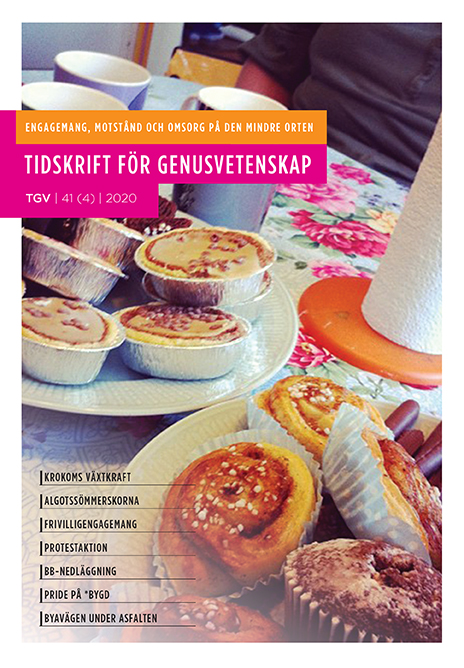”När var strejken?” Minnet av Algotssömmerskornas kamp, Västerbotten 1972–1986
DOI:
https://doi.org/10.55870/tgv.v41i4.2524Nyckelord:
Historieskrivning, kvinnorörelse, minne, alternativ produktion, urban–rural, NorrlandAbstract
This article focuses on the seamstresses at Algots in their struggle for their jobs at Algots Nord textile industries in rural localizations in the Swedish north (West Bothnia) in 1972. The textile company Algots Nord (a subsidiary to Algot Johansson AB) had factories in Skellefteå, Norsjö, and Lycksele. This localization implied labor market participation among women who had not previously held paid employment. After just a few years, bankruptcy was announced, and all three northern factories had to close. The downturn, followed by protests and demonstrations, were at center of societal debates. A solidarity movement comprising loosely organized individual and collective initiatives was formed. The purpose of this article is to study the writing of the history of the seamstresses at Algots and show its symbolic position in relation to the women’s movement. I want to make visible local stories about experiences of power and set them against the collective memory of the feminist movement. I show how the seamstresses at Algots become a symbol for many solidarity groups. How did the seamstresses become a concept for the women’s movement? Is it possible to talk about a unified “we,” a struggle on equal terms, in the case of the seamstresses at Algots? Are there challenging notions and conflicting stories? How can one explain a group’s collective memory of one or more events that have helped to shape and define history? An important point here is how groups can form a symbolic content that has a function to retain the group’s collective memory.
Nedladdningar
Downloads
Publicerad
Nummer
Sektion
Licens
Författaren/författarna behåller copyright till verket.





